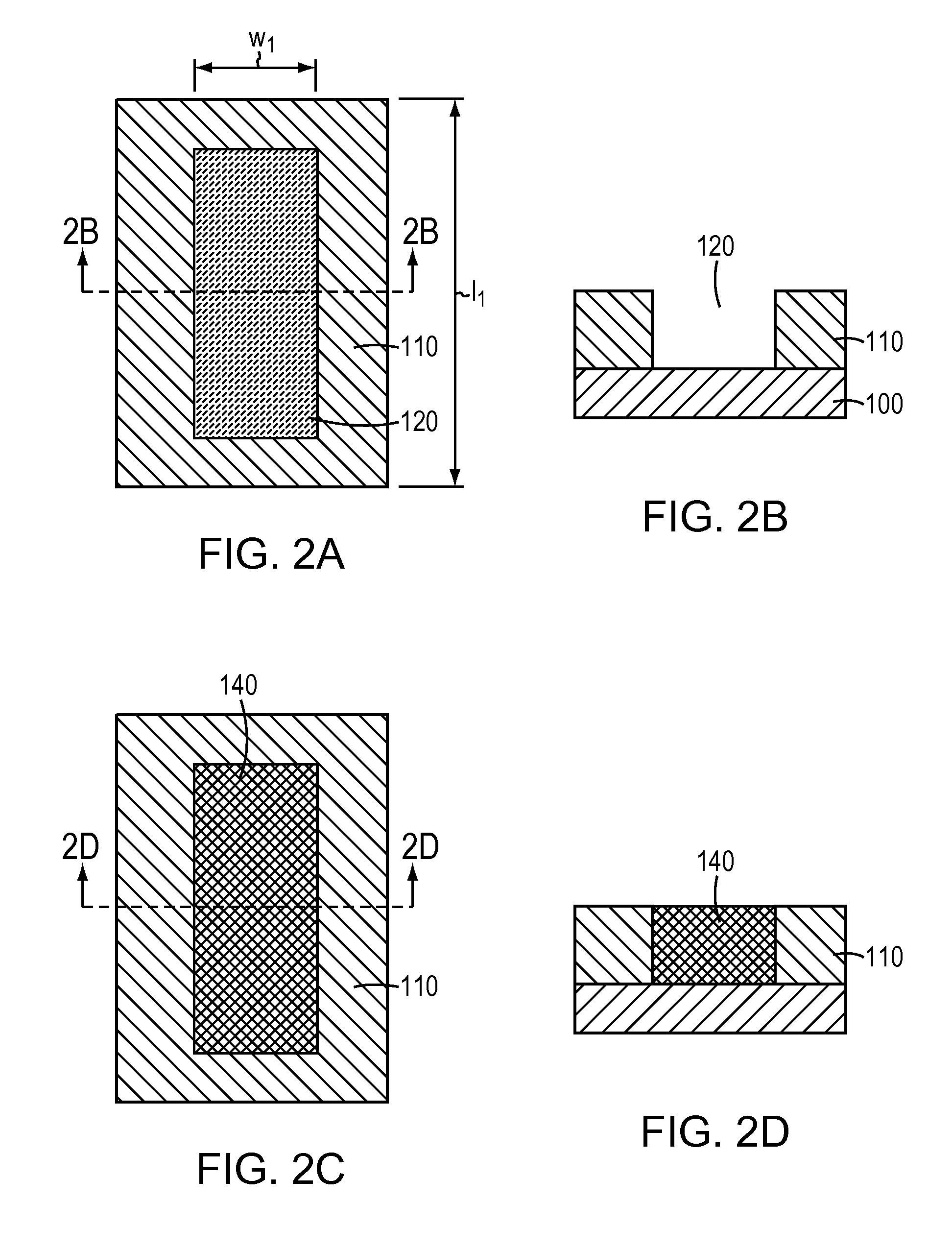Solutions for integrated circuit integration of alternative active area materials
a technology of active area materials and integrated circuits, which is applied in the direction of semiconductor devices, electrical equipment, semiconductor/solid-state device details, etc., to achieve the effects of increasing the functionality and performance of the cmos platform, reducing (a) channel resistance, and high mobility
- Summary
- Abstract
- Description
- Claims
- Application Information
AI Technical Summary
Benefits of technology
Problems solved by technology
Method used
Image
Examples
Embodiment Construction
[0042]Referring to FIGS. 1a-1c and 2a-2g, planar isolation regions may be utilized for the selective epitaxy of active area materials. Referring to FIGS. 1a, 2a, and 2b, a substrate 100 includes a crystalline semiconductor material. The substrate 100 may be, for example, a bulk silicon wafer, a bulk germanium wafer, a semiconductor-on-insulator (SOI) substrate, or a strained semiconductor-on-insulator (SSOI) substrate. A masking layer 110 is formed over the substrate 100. The masking layer 110 may be an insulator layer including, for example, silicon dioxide, aluminum oxide, silicon nitride, silicon carbide, or diamond, and may have a thickness t1 of, e.g., 50-1000 nanometers (nm). The masking layer 110 may be formed by a deposition method, such as chemical vapor deposition (CVD), plasma-enhanced chemical vapor deposition (PECVD), low pressure chemical vapor deposition (LPCVD), or a physical deposition method such as sputtering. Alternately, the masking layer 110 may be formed by th...
PUM
 Login to View More
Login to View More Abstract
Description
Claims
Application Information
 Login to View More
Login to View More - R&D
- Intellectual Property
- Life Sciences
- Materials
- Tech Scout
- Unparalleled Data Quality
- Higher Quality Content
- 60% Fewer Hallucinations
Browse by: Latest US Patents, China's latest patents, Technical Efficacy Thesaurus, Application Domain, Technology Topic, Popular Technical Reports.
© 2025 PatSnap. All rights reserved.Legal|Privacy policy|Modern Slavery Act Transparency Statement|Sitemap|About US| Contact US: help@patsnap.com



